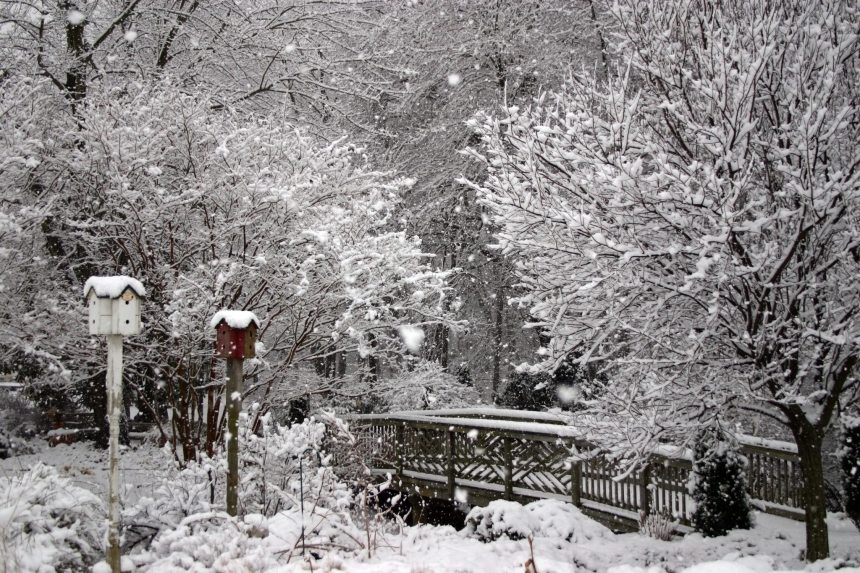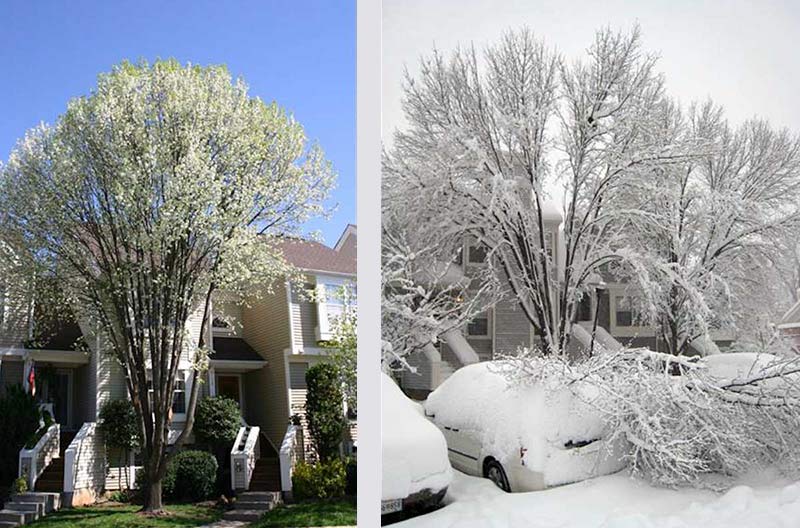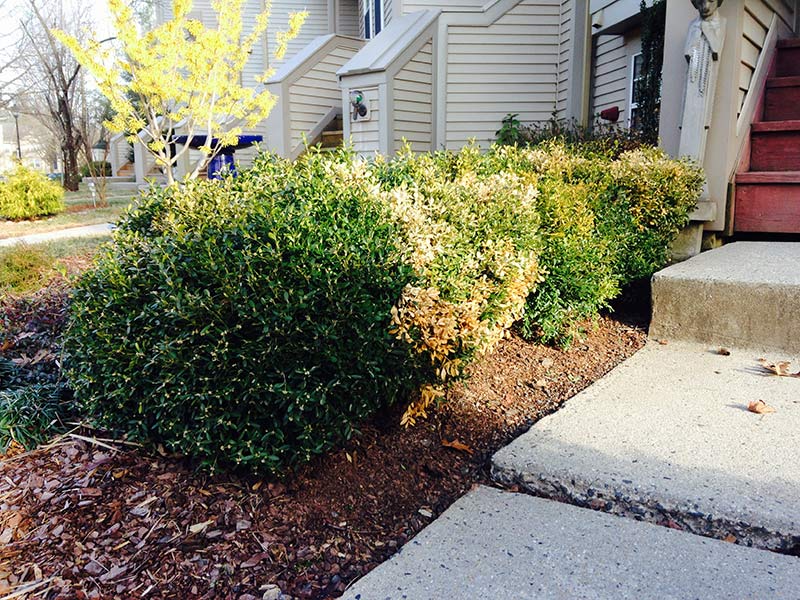
Ready or Not, Here Snow Comes
David Yost, Merrifield Plant Specialist
It was Christmas, 69 degrees, sunny and somehow we had managed to escape winter. Two weeks ago, I still had customers purchasing grass seed! Now with freezing weather and a major snowstorm on the way, Christmas seems like the good ol’ days and winter has arrived.
I’ve been a gardener for most of my life, but since “Snowmageddon 2010”, I’ve been especially attuned to how severe winter weather affects our gardens. You may recall that during this storm 20 inches of snow blanketed the Washington, D.C. region, causing power outages, stranded travelers, etc.
We all saw how the branching habit of evergreens, such as Leyland Cypress, collected the snow and toppled over, but the ‘Green Giant’ arborvitae shed the snow and remained upright. We also saw how trees with brittle wood and/or weak branching structure split, broke and suffered major damage while trees that had been pruned to maintain structural integrity escaped injury.

A couple of years later, we experienced a very dry winter with little snow and saw broadleaf evergreens, especially Japanese hollies, nandina, magnolias and camellias turn brown and shed their leaves the following spring because of winter desiccation. And then the past couple of winters we have seen rosemary, gardenias, figs and other plants killed or damaged by extremely cold temperatures.
So what have I learned and how does this apply to the approaching storm?
- Snow is good for the garden! Snow acts as a warm blanket, keeping the temperature at a cozy 32 degrees and sheltering your plants from the drying winds. As it melts, the snow gradually replenishes moisture in the soil.
- Pruning works! Woody plants that have been pruned to maintain a sound branch structure will usually be able to support the weight of even a heavy snowstorm with little to no damage.
- Remove heavy snow from evergreens. Gently brush it off with a broom before it accumulates to the point where it is breaking branches or pulling the plants to the ground.
- Follow the instructions on ice melt products. All of these products, even those labeled as natural and/or safe, contain salts that will damage your plants if you apply too much.

Shrubs damaged by ice melt.
- If your plants do get damaged, be patient and allow them time to recover in the spring. Resist the urge to prune or remove plants until you know they are dead. Some plants may not show signs of recovery until as late as June.
If you need help getting your garden prepared for winter, we are ready to help with questions, ice melt and snow shovels to keep you and your garden comfortable through the storm.


 Bryn Wallace
Bryn Wallace Bryn Wallace
Bryn Wallace